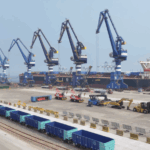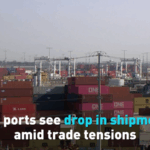Automation Meets Ambition: How Tech Is Supercharging China’s Trade Game
Picture this: driverless trucks zipping across docks, cranes moving containers with robotic precision, and zero-carbon terminals humming with 5G-powered efficiency. Welcome to Tianjin Port – a glimpse into China’s tech-driven future of global trade. 🌐
Thanks to AI, autonomous vehicles, and cloud computing, this northern Chinese port now boasts 40% higher crane efficiency and 60% lower labor costs. But it’s not alone – Ningbo-Zhoushan Port, the world’s busiest cargo hub, is also joining the smart port revolution. 💡
Why It Matters for Your TikTok Feed 📈
With 90% of China’s $2.97 trillion H1 trade moving by sea (per customs data), these upgrades are shaking up global supply chains. \"Smart ports aren’t just cool tech – they’re trade turbochargers,\" says Lin Yikun from the China Communications and Transportation Association.
International experts are taking note too. \"China’s leading the maritime economy like a K-pop group leads charts,\" quips Steve Gordon of Clarkson Research, highlighting that 85% of global trade rides the waves.
The Green Angle You’ll Swipe Up For ♻️
Tianjin’s status as the first intelligent zero-carbon terminal shows China’s playing the long game. As climate concerns grow, these eco-friendly ports could become the new global standard – think Tesla-level disruption for shipping.
Reference(s):
Smart ports help China consolidate its booming foreign trade
cgtn.com




